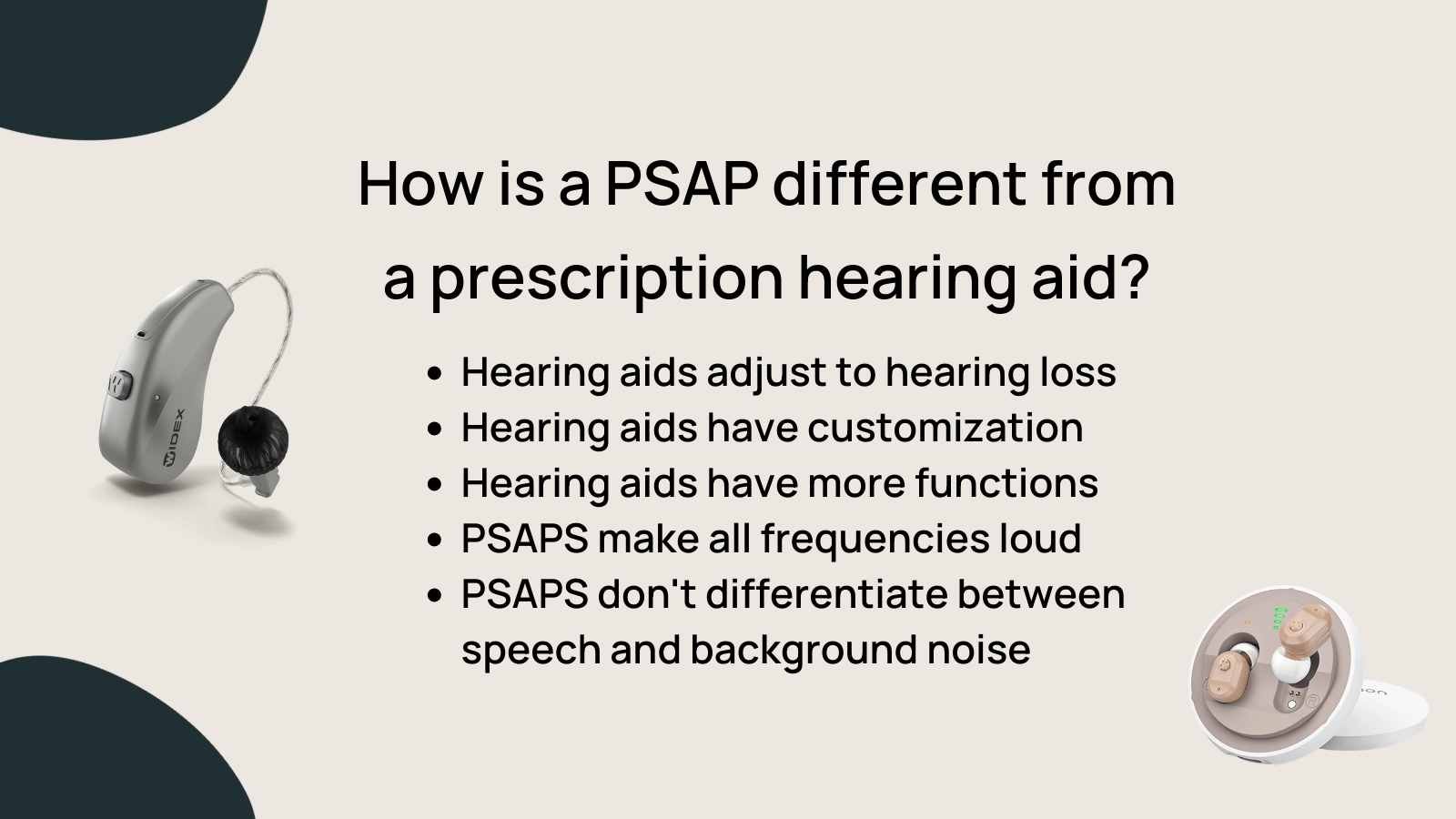Key Takeaways:
- There are several different devices you can purchase to help you hear better, and many people are unclear about the difference between PSAPs and hearing aids.
- Personal sound amplification products (PSAPs) were originally meant to help individuals hear birdsongs and therefore do not treat hearing loss.
- Hearing aids, whether prescription or over-the-counter, are programmed to an individual's specific hearing loss.
- A hearing test is the best way to find out about your hearing and which device will be most beneficial for your needs.

When it comes to choosing a hearing device that’s right for you, there are many options available. Trying to figure out which one suits your lifestyle best can be overwhelming. For example, do you need a hearing aid or a personal sound amplification product? In my experience as an audiologist, patients sometimes confuse these devices—also known as PSAPs—for medical-grade hearing aids. Most patients need a hearing aid rather than an amplifier. So, what are the differences? In this article, we'll break down the distinctions between hearing aids and PSAPs so that you can decide which is suitable for your hearing health.
What is a PSAP?

Simply put, PSAP is a type of hearing device that amplifies sound. These personal devices are intended for people who do not have hearing loss but want to enhance their listening experience in certain situations, such as when out in nature listening for birds or other wildlife. Some folks also wear them when they are watching television or at larger social events. However, personal sound amplification products are less sophisticated than hearing aids and should not be confused as an alternative to hearing aids. Keep reading to get more insights on how PSAPs differ from hearing aids.
How is a PSAP different from a prescription hearing aid?

There are several critical differences between PSAPs and hearing aids. First, hearing aids are designed to treat hearing loss according to a person's audiogram, while PSAPs are not set for an individual's hearing loss.
.jpg)
For example, a person with high-frequency hearing loss will need less volume in the low frequencies but more in the high frequencies. A hearing aid can adjust for mild to severe or even profound hearing loss, but a PSAP will make all frequencies equally loud. Which means, a PSAP cannot distinguish between speech versus background noise and will amplify everything equally. On the other hand, hearing aids are more sophisticated in how they handle background noise. As speech in noise understanding is a common complaint, this is an essential characteristic of a hearing aid. Finally, hearing aids provide many features and customization options unavailable with PSAPs. For example, many prescription hearing aids can connect via Bluetooth to a smartphone and stream music or other audio.
How are PSAPs and self-fitting OTC hearing aids different?
.jpg)
The differences between PSAPs and OTC hearing aids are similar to their prescription counterparts. An OTC hearing aid can correct for a personalized mild to moderate hearing loss, while a PSAP increases the volume at all frequencies and is not meant to fit an individual's hearing loss. OTC hearing aids will also support background noise, while PSAPs do not. Additionally, certain OTC hearing aids connect to a Smartphone app, or some may have Bluetooth streaming. A PSAP typically does not connect via Bluetooth or stream audio.
Are PSAPs safe?

Yes, PSAPs are generally safe for most people. However, there are some caveats to keep in mind. These devices are not intended to treat hearing loss and do not fall in the category of FDA-regulated devices. The FDA also does not regulate headphone or PSAP volume, and turning the volume up can cause damage to your hearing within minutes. In the long run, PSAPs have the potential to cause additional hearing damage because of the unregulated volume. Now, scroll down and we’ll discuss other essential points regarding PSAPs and hearing health.
Try a Hearing Test

There are different types of hearing loss and etiologies for hearing loss. A comprehensive hearing test will determine the type and severity of your hearing loss and whether you may need medical management. The audiologist can then make appropriate recommendations based on your hearing and your lifestyle. Additionally, if your hearing is worse in one ear, an audiologist will refer you to an ENT to rule out other conditions. An audiologist may also recommend seeing an ENT if you have earwax impaction or fluid in the ear causing hearing difficulty.
Choose the Right Technology

Once you know your hearing status, it's easier to decide what technology will benefit you. A PSAP can provide only limited benefit, so it may not offer the help you really need. However, if you're budget constrained, there are still ways you can get the amplification you need. What’s a wallet-friendly option? Consider a lower-end prescription hearing aid or OTC device.
Other Assistive Technology
If you struggle with your hearing but only in certain situations, other devices can help. To start, consider TV ears if you need more volume. In addition, you can find other helpful assistive technology here.
Conclusion
If you're trying to decide between a hearing aid and a PSAP, it's essential to remember the key differences between these two devices. First, hearing aids are designed to treat hearing loss while PSAPs are not. Hearing aids are fitted to the individual wearer's hearing loss and customized for their needs, while PSAPs are not. Hearing aids are regulated by the FDA, while PSAPs are not. Finally, hearing aids provide many features and customization options unavailable with PSAPs. If you have questions about which device suits you, please consult an audiologist or hearing healthcare professional.






